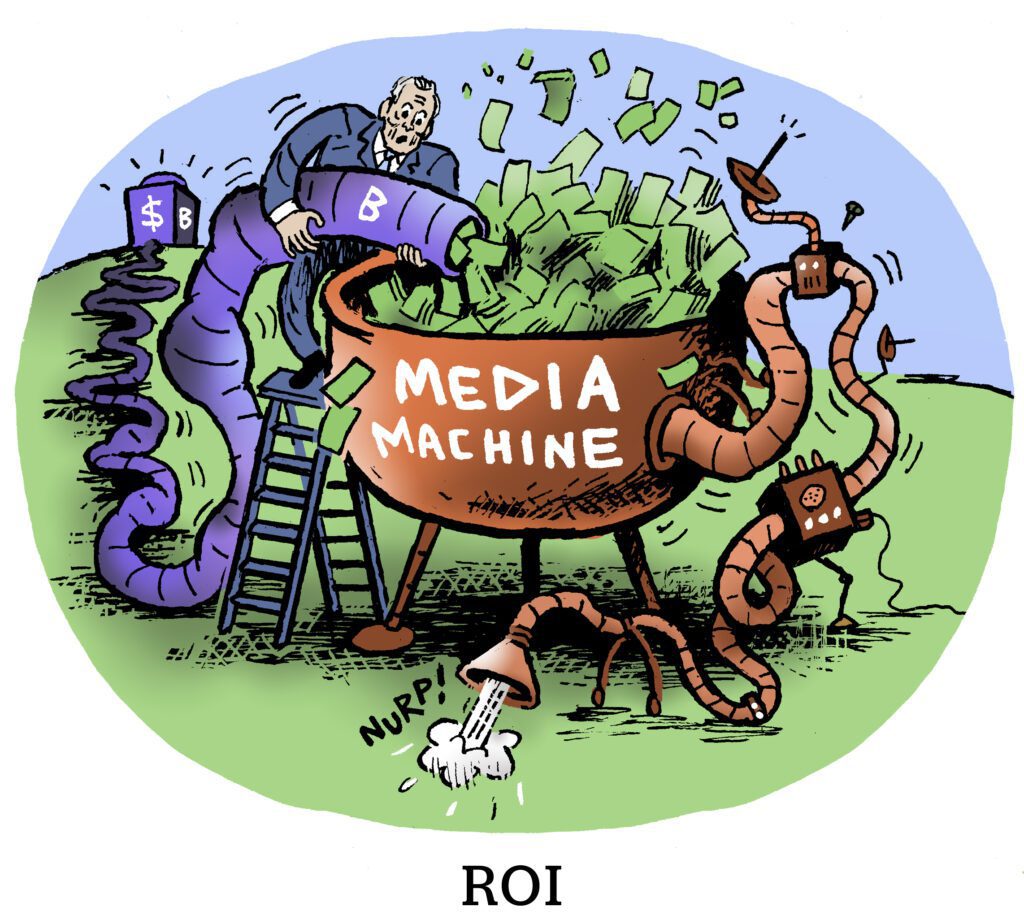Meta has many pots on the boil right now, and for good reason.
The advertising industry is bubbling like a pan of oil.
Meta has announced major new initiatives to support the metaverse (natch), AI, brand safety and suitability controls and third-party verification for the feed, automated ad products, business messaging, privacy-enhancing technologies, creator tools and short-form video.
At a press event on Monday in New York City, Meta touted its ambitions in all of these areas and announced the launch of tests for five new ad formats.
One is a scrollable carousel ad unit at the bottom of Reels on Facebook. Then there are skippable video ads that run between the loops of a Facebook Reel, ads on the Explore page that people see when they first open the Instagram app, ads in Instagram profile feeds (starting with a handful of US-based creators) and an AI-powered ad format that combines ads from multiple advertisers to reach people who have expressed interest in a certain category, like an ad for makeup brushes next to an ad for cosmetics.
“Everything is under the umbrella of discovery,” Meta VP Nada Stirratt said at the event. “We help 200 million businesses reach 3 billion people. We help them discover new products, form new relationships and form new habits.”
Reeling
But, speaking of forming new habits, advertisers must wean themselves from their business-as-usual practices.
Over the years, ad buyers became practically addicted to Facebook’s ad machine because the math was simple. They put in a dollar, got more than a dollar in return, rinse and repeat.
It might have felt like magic to some marketers, but Facebook itself spent a lot of money to make its money.
Since 2018, Facebook and now Meta have spent more than $75 billion dollars on capital expenditures, much of that on artificial intelligence, machine learning and tools to help deliver personalized ads, Nicola Mendelsohn, VP of Meta’s global business group told the press.
“And we’re slated to spend a record amount on these investments this year alone,” Mendelsohn said.
Meta will indeed keep having to make big investments to navigate its long-term existential crises as well as more immediate issues.
Take your pick. There’s the choppy economy, Apple’s ATT changes, privacy regulations, ad spend on the decline, a slowdown of the pandemic-driven ecommerce boom and competition from rivals like TikTok, which is why Meta is getting reely (sorry, irresistible) focused on short-form video.
But the shift to short-form is a long-term battle. Short-video content, like Reels, monetizes at a lower rate than stories or ads in the feed. “In the near term, the faster that Reels grows, the more revenue that actually displaces from higher monetizing surfaces,” Mark Zuckerberg noted during the company’s Q2 earnings call in July,
Eye on automation
In the meantime, though, as Meta rebuilds and adapts its ads infrastructure, some advertisers are experimenting with new Meta products and seeing positive results.
Apple’s ATT “shook up the entire industry,” said Ben Yahalom, chief business officer at DTC men’s T-shirt brand True Classic. But over the past month and a half, True Classic has been testing Advantage+, Meta’s suite of automated ad products, including Advantage+ shopping campaigns, which came out of beta in August.
In that time, Yaholom said, True Classic saw an 18% increase on its return on ad spend in the US and a roughly 13% increase internationally after testing Advantage+ tools.
“We’re huge believers of leaning into AI and machine learning,” he said.
As in, focusing on the creative and letting the algorithm do its thing, Yaholom said, by handing over control to the platform to find the right audiences to target based on the brand’s objectives.
The shift to machine learning to power ad products and placements is a trend that’s been brewing for several years at Meta and Google.
“If you were to ask me five years ago, I would have said it’s all about microtargeting, interest targeting and lookalikes,” Yaholom said. “But if you’re trying to attract a certain persona, you might be better off developing content to resonate with that person in mind – optimization and creative takes the place of making assumptions about who should or shouldn’t be reached.”














